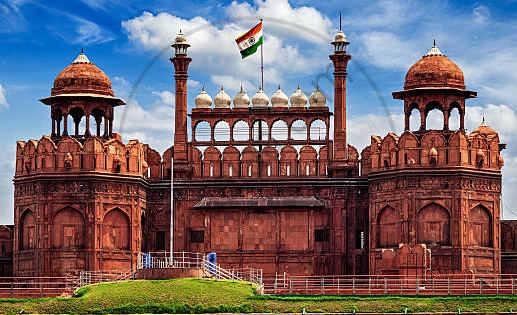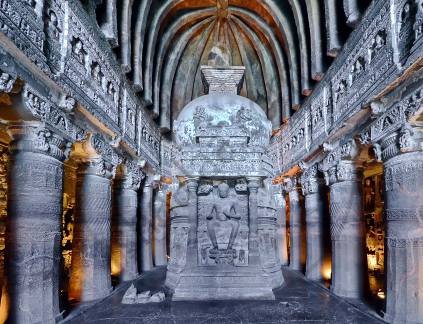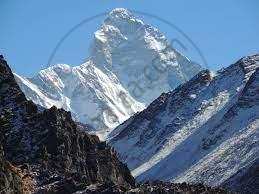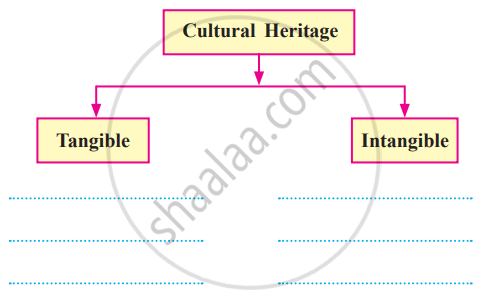Topics
Historiography : Development in the West
History : Applied History
Working of the Constitution
Historiography : Indian Tradition
The Electoral Process
Political Science : Working of the Indian Constitution
Applied History
Political Parties
History of Indian Arts
- What is ‘Art’?
- Indian Traditions of Visual Arts (Drik Kala): Painting
- Prehistoric Paintings
- Mural Paintings and Cave Painting
- Folk Styles of Paintings
- Classical Styles of Painting
- Miniature Paintings in Manuscripts
- Modern Indian Paintings
- Indian Traditions of Visual Arts (Drik Kala): Sculpture Art
- Indus Civilization Sculpture
- Folk Styles of Sculptural Art
- Classical Styles of Sculptural Art
- Indian Iconography
- Indian Traditions of Visual Arts (Drik Kala): Architecture and Sculpture
- Rock-cut Architecture
- Temple Architecture
- Indo-Islamic Architecture
- Indo-Gothic architecture
- Indian Traditions of Performing Arts
- Indian Theatre
- Indian Music
- Indian Dance
- Present Scenario of the Performing Arts
- Art, Applied Art, and Professional Opportunities
Social and Political Movements
- Movement
- Important Movements in India
- Tribal Movement
- Farmers Movement
- Worker's Movements
- Women’s Movement
- Environment Movements
- Consumer Movement
Mass Media and History
Challenges Faced by Indian Democracy
Entertainment and History
Sports and History
Tourism and History
Heritage Management
History - Imperialism
History - 20th Century Age of conflict
History - Emancipation of Asia and Africa
History - World after World War 2
Political Science
Geographical discoveries and colonization
- Concept for Geographical Discoveries and Colonization
Africa
- Imperialism - Africa
Asia: India, China, Japan
- Concept for Asia: India, China, Japan
Dictatorships in Europe, Second World War and world
- Concept on Dictatorships in Europe
- Concept for Second World War and World
First world war
- Concept on First World War
The League of Nations
- Concept for the League of Nations
Russian Revolution
- Concept for Russian Revolution
United Nations Organization
- Concept for United Nations Organization
Africa
- Emancipation of Africa
Asia
- Emancipation of Asia
Globalization
- Globalization After World War II
Scientific and Technological Progress
- Scientific and Technological Progress After World War II
Cold war
- Formation of the Cold War
Social Diversity and Democracy
- Social Diversity
- Coccept for Caste/Race and Democracy
- Concept for Language and Democracy
- Cocnept for Religion and Democracy
- Concept for Gender and Democracy
- Concept for Democracy and Diversity
Challenges to Democracy Remedial Measures to the Challenges
- Concept for Challenges to Democracy Remedial Measures to the Challenges
Internal work
Democracy
- Democracy - Meaning, Types and Characteristics
Political Parties and Types
- Political Parties
- Importance of Political Parties
- Major National and Regional Parties in India/ Types of Political Parties
- Heritage
- Types of Heritage
Definition
- Heritage: Features belonging to the culture of a particular society, such as traditions, languages, or buildings, that were created in the past and still have historical importance are known as Heritage.
- Cultural Heritage: Cultural heritage is the heritage of tangible and intangible heritage assets of a group or society that is inherited from past generations.
- Natural Heritage: Natural heritage refers to the sum total of the elements of biodiversity, including flora and fauna, ecosystems, and geological structures.
Notes
Heritage:
- Features belonging to the culture of a particular society, such as traditions, languages, or buildings, that were created in the past and still have historical importance are known as Heritage.
- There are two types of Heritage.
(A) Cultural Heritage and
(B) Natural Heritage
 |
1. Cultural Heritage:
- Cultural heritage is the heritage of tangible and intangible heritage assets of a group or society that is inherited from past generations.
- Not all heritages of past generations are 'heritage'; rather, heritage is a product of selection by society.
- It is in the form of human creation.
- It is of two types - Tangible and Intangible.
A) Tangible Cultural Heritage:
- The tangible heritage refers in general to all the material traces such as archaeological sites, historical monuments, artifacts, and objects that are significant to a community, a nation, or/and humanity that we can see and physically touch.
- Immovable heritage includes buildings, historic places, and monuments.
- Moveable heritage includes books, documents, moveable artworks, music, and other artefacts that are considered worthy of preservation for the future.

Agra Fort

Ajanta Caves
B) Intangible Cultural Heritage:
- It consists of non-physical aspects of a particular culture, more often maintained by social customs during a specific period in history.
- It includes traditions or living expressions inherited from our ancestors and passed on to our descendants, such as oral traditions, performing arts, social practices, rituals, festive events, knowledge, and practices concerning nature and the universe or the knowledge and skills to produce traditional crafts.
- Naturally, intangible cultural heritage is more difficult to preserve than physical objects.

Ramleela

Bharatanatyam
2. Natural Heritage:
- Natural heritage refers to the sum total of the elements of biodiversity, including flora and fauna, ecosystems, and geological structures.
- It forms part of our natural resources.
- All varieties of heritage can be regarded as innate, real, and came into being without the human response.
- Natural Heritage is related to specific natural features, areas involving endemic species (flora and fauna), geological and physiographical formations, and sites of unique natural beauty or conservation.
- Examples of natural heritage include plants, landscapes, rivers, forests, natural falls, caves, and animals.

Himalaya
If you would like to contribute notes or other learning material, please submit them using the button below.

